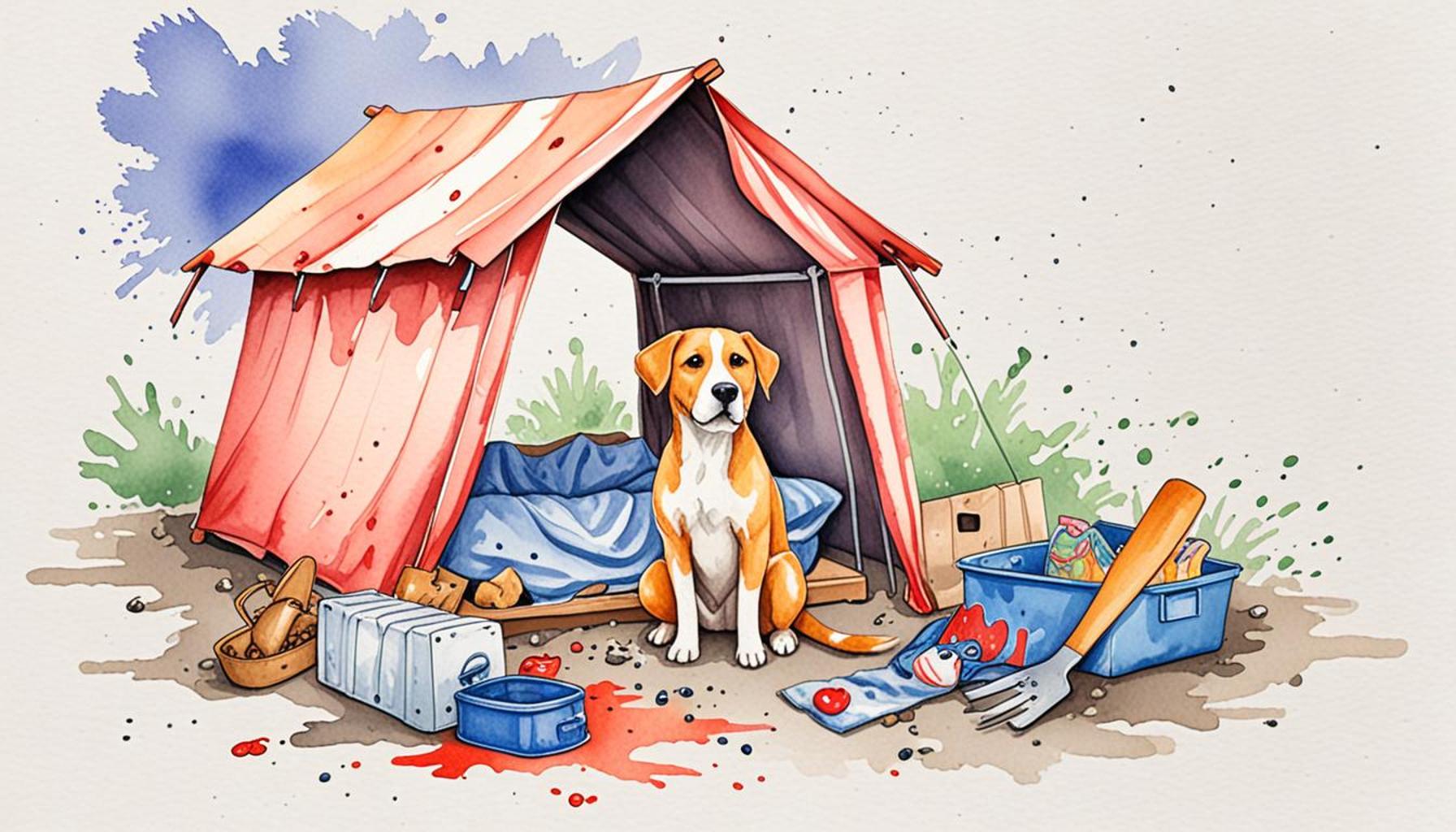Animal Adoption and Awareness about Abandonment: Effective Campaigns to Encourage Adoption

Understanding Animal Abandonment and the Need for Awareness
Every year, millions of animals face the heartbreaking reality of abandonment. In the United States alone, approximately 3.3 million shelter animals are left to navigate a life without a loving home. This alarming statistic is not just a number; it reflects the collective failure in understanding the responsibilities that come with pet ownership. From dogs and cats to rabbits and guinea pigs, these animals are often left bewildered and vulnerable to a world that can be harsh and unforgiving.
The Importance of Campaigns to Raise Awareness
To address this pressing issue, effective campaigns that raise awareness about animal abandonment and highlight the importance of adoption are essential. Some of the most impactful initiatives have focused on:
- Community Engagement: By involving local communities, initiatives create a sense of shared responsibility. Community-driven events such as pet adoption fairs, educational workshops, and volunteer programs not only promote animal welfare but also connect residents to their local shelters. Examples include the “Clear the Shelters” event held annually, which encourages local adoption by waiving fees and offering incentives.
- Social Media Outreach: Utilizing platforms like Instagram and Facebook has become a pivotal strategy for shelters. These venues allow for the sharing of compelling stories and photographs of animals in need, resonating deeply with a wider audience. Hashtags like #AdoptDontShop and #ShelterPet are commonly used to promote awareness and encourage potential adopters to consider shelter animals.
- Partnerships with Local Businesses: Collaborating with pet-friendly businesses can create adoption-friendly environments within the community. Cafes hosting “Yappy Hours” where patrons can meet adoptable pets, or collaborations with pet supply stores to feature animals available for adoption can significantly increase visibility for shelters. For instance, local breweries may host fundraisers that support animal rescues, turning social gatherings into platforms for change.
Beyond Adoption: Addressing the Root Causes
Understanding the impact of these campaigns goes beyond just increasing adoption rates. It also shines a light on the profound issues surrounding animal abandonment. Many pets are surrendered due to unforeseen circumstances—such as financial hardship, housing changes, or lack of time or resources. By educating the public about these challenges, organizations can encourage compassionate choices that may prevent abandonment in the first place.
Fostering Responsible Pet Ownership
Ultimately, the goal is to not only encourage adoption but also to build a culture of responsible pet ownership. This encompasses not just the act of adopting an animal, but also understanding the commitment involved in caring for a living being. Potential pet owners must be informed about the long-term responsibilities that pets entail, including regular veterinary care, exercise, and socialization. By fostering this awareness, we can help ensure that every animal can enjoy a safe and loving environment, further bridging the gap between shelters and forever homes.
As communities come together to address animal abandonment with compassion and creativity, the hope is that fewer animals will face the ominous fate of being left behind in shelters. With ongoing efforts in awareness and education, we can build a society that truly values all living beings, leading to a future where every pet finds a forever family.

DISCOVER MORE: Click here to learn how pets can boost your well-being
Strategies for Effective Campaigns to Promote Adoption
The journey toward reducing animal abandonment begins with effective public outreach and education. With the right strategies in place, campaigns can not only elevate awareness about the plight of shelter animals but also change public perceptions and motivate action. Here are some proven strategies that have been employed across the United States to foster a culture of animal adoption:
- Storytelling and Personal Experiences: Personal narratives resonate well with potential adopters. Campaigns that share heartwarming stories of rescued animals and their journeys to finding forever homes capture the emotional essence of adoption. By highlighting these stories through video, written testimonials, or interactive social media posts, shelters can foster empathy and encourage individuals to adopt rather than shop.
- Educational Workshops and Seminars: Organizing workshops focusing on responsible pet ownership and the realities of animal abandonment can help demystify the adoption process. These informative sessions can cover topics such as the financial responsibilities of pet ownership, the need for regular veterinary care, and the emotional investment required. By tackling common misconceptions, shelters can better prepare potential adopters for the journey ahead.
- Advocacy Through Influencers: Leveraging social media influencers who are passionate about animal welfare can significantly enhance campaign reach. Many influencers share their space with adoptable pets, showcasing them to their followers and encouraging their adoption. Such partnerships can create a ripple effect, prompting thousands of viewers to consider bringing a shelter animal into their home.
- Incentives for Adoption: Offering incentives can play a vital role in encouraging adoption. Programs that provide free or discounted spaying and neutering, vaccinations, or starter kits can eliminate the financial barriers that deter potential adopters. For instance, events like “National Adopt a Shelter Pet Day” often include waivers on adoption fees or special giveaways, drawing more families to shelters.
- Multi-Platform Marketing: Integrating various platforms for a cohesive advertising message can enhance visibility. Whether through print, radio, or digital marketing, consistent messaging about the benefits of adoption creates an omnipresence that is difficult to ignore. Campaign slogans such as “Don’t Shop, Adopt!” can be used across all channels to reinforce the urgency for shelter animals.
As these strategies illustrate, effective campaigns to promote animal adoption are multifaceted, addressing both the emotional and informational needs of potential adopters. By focusing on community engagement, emotional storytelling, and strong partnerships, these campaigns aim not just to increase adoption rates but to shift societal views on pet ownership responsibility.
Building a Supportive Network for Shelters
A vital aspect of encouraging animal adoption lies in supporting the shelters themselves. Many organizations struggle under the weight of limited funding and resources, often leading to high euthanasia rates. Collaborative efforts that involve local governments, nonprofits, and the private sector can create a more robust support network. By securing grants, organizing fundraising events, and pooling resources, communities can provide shelters with the tools they need to thrive, thereby enabling them to continue their life-saving work.
Through the convergence of these innovative campaigns and community support, there lies hope for reducing the number of animals abandoned each year. The cultivation of awareness is only the first step in this ongoing journey toward ensuring that every animal finds the loving home it deserves.
| Advantage | Details |
|---|---|
| Increased Awareness | Campaigns raise awareness about the plight of homeless animals, fostering empathy in communities. |
| Community Engagement | Active involvement from local organizations and volunteers promotes a sense of responsibility toward animal welfare. |
| Emotional Connection | Stories of individual animals resonate with potential adopters, encouraging them to take action. |
| Long-Term Commitment | Promoting the lifetime commitment needed for pet ownership can lead to more responsible adopters. |
The topic of animal adoption is gaining crucial importance as campaigns evolve to tackle abandonment awareness. These efforts significantly increase community engagement, showcasing the invaluable role of volunteers and local organizations. Highlighting emotional connections through real-life stories leads prospective adopters to recognize animals not just as pets but as family members. This emotional appeal can catalyze meaningful change, nudging individuals to consider the responsibility of lifelong ownership. Effective campaigns employ a variety of strategies such as social media outreach, event organizing, and educational programs to ensure the message reaches a broader audience. By focusing on the importance of responsible pet ownership, these initiatives instill a sense of community responsibility, encouraging everyone to play a part in reducing the number of abandoned animals. Each of these advantages supports a movement that not only aims to find homes for animals in need but also educates the public about the serious consequences of abandonment. Increased awareness and engagement are fundamental components in changing perceptions and behaviors within society, ultimately striving for a future where every animal is valued and cared for.
DISCOVER MORE: Click here to find out what’s best for your pet
Leveraging Technology to Enhance Animal Adoption Awareness
In our increasingly digital world, utilizing technology presents an unparalleled opportunity to connect animal shelters with potential adopters. Innovative strategies that integrate technology into adoption campaigns can make a significant difference in raising awareness and increasing adoption rates for shelter animals.
- Virtual Adoption Events: The advent of online platforms has allowed shelters to host virtual adoption events, making it easier for prospective adopters to interact with animals from the comfort of their homes. Utilizing live streams and video conferencing tools, shelters can conduct real-time meet-and-greets, showcasing the personalities and quirks of adoptable pets. These events can reach a broader audience, particularly for individuals who may have mobility challenges or reside in remote areas.
- Mobile Applications: Developing dedicated mobile applications that allow users to view available animals for adoption can streamline the process. These apps can provide virtual tours of shelters, educational content about pet care, and even an option to set up appointments for in-person visits. Incorporating features like ‘filter by breed or size’ gives potential adopters the tools to find their ideal pet. As studies indicate that convenience can directly influence adoption decisions, such technological advancements reap considerable benefits.
- Social Media Challenges: Campaigns utilizing social media challenges have gained traction in fostering community engagement. By prompting users to participate in challenges—such as showcasing their shelter-adopted pets or sharing their own pet adoption stories—these campaigns promote a culture of compassion and support. The user-generated content not only enriches community bonds but also spreads awareness, prompting others to consider adopting as a viable option.
- The Power of Visual Content: With attention spans decreasing in our fast-paced society, visually appealing content is critical for effective communication. Posts that feature high-quality photos and creative videos of animals can capture the hearts of potential adopters. Infographics that visualize the issues of abandonment—like statistics on the number of animals in shelters and the comparison of adoption rates before and after campaigns—can educate the audience while compelling them to act.
- Online Fundraising for Shelters: Technology also plays a pivotal role in financial support for shelters, which is directly linked to their ability to facilitate adoptions. Platforms such as GoFundMe, Kickstarter, and social media fundraising tools can help shelters raise much-needed funds for veterinary care, spaying/neutering programs, and facility improvements. With a financially stable base, shelters can prioritize quality care for their animals, which ultimately leads to more successful adoptions.
Incorporating technological advancements into campaigns not only enhances the visibility of shelter animals but also facilitates deeper community involvement. As communities rally behind their local shelters through innovative digital strategies, they lay the foundation for more successful animal adoption outcomes. This interconnectedness transforms the narrative surrounding animal adoption, illustrating that it is a collective responsibility that can yield positive changes for countless lives—both human and animal.
DISCOVER MORE: Click here to learn about balanced nutrition for your pets
Conclusion
As we reflect on the multifaceted challenges of animal adoption and the pressing issue of abandonment, the importance of strategic outreach campaigns cannot be overstated. Raising awareness through innovative and effective strategies can engage communities at multiple levels, inspiring individuals to take active roles in finding forever homes for animals in need. From leveraging digital platforms to amplify the reach of virtual adoption events to the compelling storytelling facilitated by social media challenges, each approach plays a vital role in reshaping public perception.
The shift towards utilizing technology in adoption initiatives not only broadens access to shelter pets but also creates an enriched experience for potential adopters. By providing educational resources and showcasing the unique qualities of adoptable animals, these efforts encourage a deeper connection that can ultimately lead to successful adoptions. Furthermore, addressing the financial aspects, such as securing funding for shelters, ensures that they can maintain high standards of care for their inhabitants, creating a win-win scenario for both animals and their future families.
As awareness about animal abandonment continues to grow, it is imperative for communities to engage collectively in these campaigns. Every effort counts in spreading the message that adopting a pet saves lives. By fostering compassion and solidarity within our neighborhoods, we have the potential to make a lasting impact. Let us embrace our responsibility to advocate for animal welfare and take action towards ensuring that every pet finds a loving home, thereby transforming the future for countless animals across the nation.


